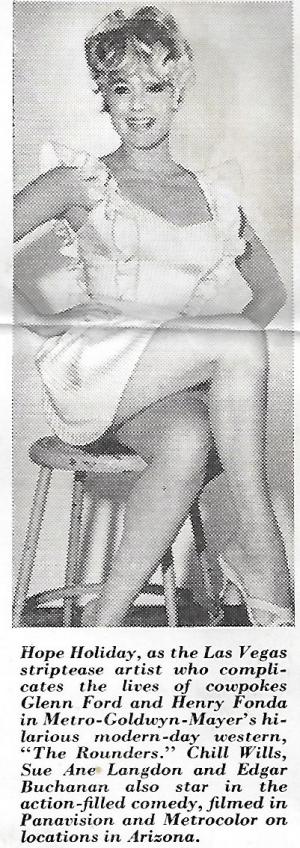Hope Holiday Net Worth is
 $5 Million
$5 Million
Mini Biography

Like Judy Holliday ten years before her, Wish Holiday became referred to as the dame with “the tone of voice” through the 1960s, her scratchy Brooklynese shades immediately identifiable on film and Television. This buoyant personality comedienne, whose blonde tomboy appears and sturdy energy was similar to Betty Hutton and who obtained her method to popularity in the movies of movie director Billy Wilder, continued to utilize this exclusive tone of voice many times throughout her profession before phasing out and getting into producing. She was created Wish Jane Zee on November 30, 1933, in Brooklyn and grew up in Manhattan. The little girl of burlesque comic-turned-Capitol Theater producer/supervisor Allen Zee, who was simply blessed Allen Zaslawsky of Russian-Jewish parentage but legitimately transformed it to “Zee” before Wish was created, the celebrity and her old sister Judy had been pushed early in to the business. Been trained in ballet, touch and contemporary dance, Hope produced her youthful debut with this program “Hearn’s Kiddie Hour” on regional NY radio where she sang and danced. Via the cable connections of their influential dad, both Wish (billed as “Wish Zee”) and Judy (billed as “Judy Sinclair”) produced their Broadway bows as teenagers in the chorus of “Gentlemen Prefer Blondes” in 1949 starring Carol Channing. Wish continued to uneventful stints being a Ralph Flanagan music group vocalist, nightclub performer and Copacabana appeal before time for the stage. Her dad transformed her stage name to “Wish Vacation” (in tribute to Judy Holliday) in order to avoid nepotism chat when he and Man Lombardo ensemble her as the “Teeny Weeny Genie” in the 1954 musical extravaganza “Arabian Evenings” starring Lauritz Melchior on the Jones Beach Sea Theatre in Longer Island. After a firing in the Broadway show “Best Banana,” Hope’s career returned on the right track in summer stock with such shows as “Guys and Dolls” (wherein she developed “the voice” as Adelaide), “Oklahoma!” (as Ado Annie), “Greatest Feet Forward” (as Ethel), so that as a highlighted dancer in the 1956 Broadway and film edition of Li’l Abner (1959). It certainly took off, nevertheless, after Billy Wilder solid her as Mrs. Margie MacDougall, Jack port Lemmon’s Xmas Eve tavern pick-up, in the Oscar-winning picture The House (1960). Her special tone of voice and daffy countenance was an instantaneous hit with viewers, which brought collectively the right mixture of humor and pathos to her and Lemmon’s moments. Hope’s achievement with this resulted in a brief, special agreement with Paramount and comic Jerry Lewis and a component in his automobile The Ladies Guy (1961), not forgetting several TV visitor parts in such popular series while “Checkmate,” “Possess Gun, Can Travel,” “Ben Casey,” “THE BRAND NEW Phil Silvers Display” and “The Farmer’s Girl.” She was also solid in the Billy Wilder film Irma la Douce (1963) mainly because Lolita, the flashy Parisienne prostitute using the popping bubble gum and heart-shaped glasses and in the traditional western humor The Rounders (1965) mainly because Henry Fonda’s tart/like interest. More Television followed after her 1967 relationship (her second) to personality acting professional Frank Marth, but Hope’s performing profession gradually waned, with just occasional episodic stints about such comedies as “That Woman!,” “Like, American Style,” “Change” and “Vega$”. In the first 1980s, in the instigation of friend/acting professional Cameron Mitchell she started associate/executive producing many of his lowbudget exploitation automobiles including Tx Lightning (1981), Uncooked Push (1982), Killpoint (1984), Low Blow (1986), Code Name Vengeance (1987), Space Mutiny (1988) and Trend to Get rid of (1988). She after that continued to create beneath the auspices of movie director David Winters before retiring.
Known for movies




